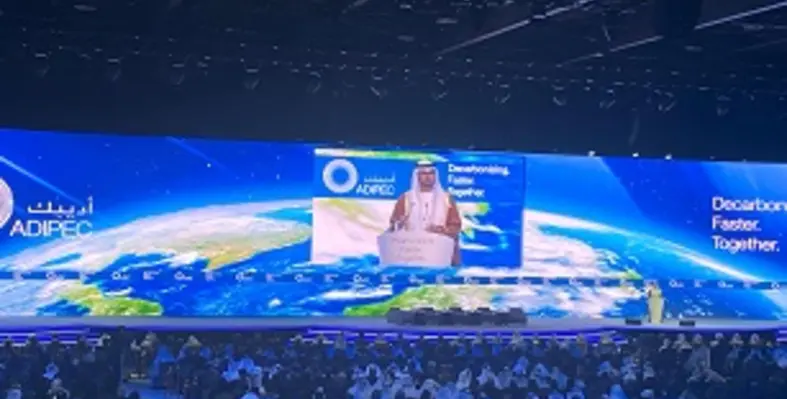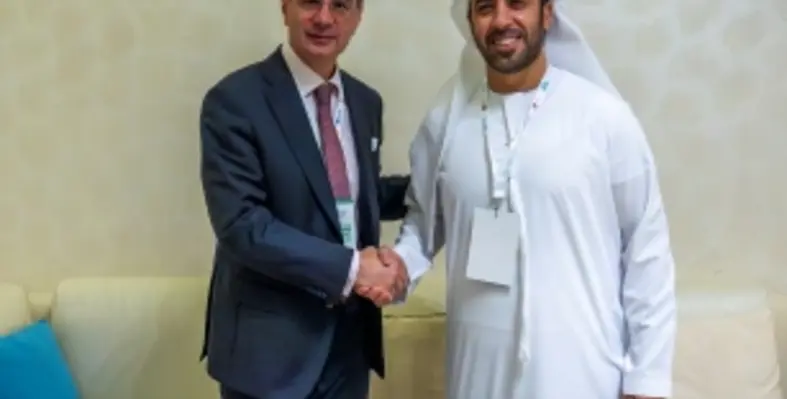
Sultan Al Jaber addresses the audience during the ADIPEC opening ceremony. (Image source: Alain Charles Publishing)
ADIPEC 2023 opened its doors today, with a focus on decarbonising current energy systems and to collaborate on new technologies for the future. Sania Aziz reports







